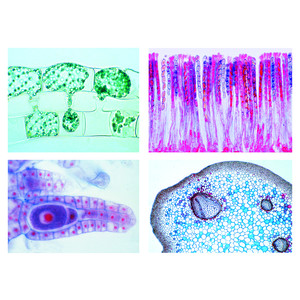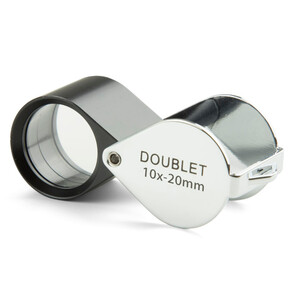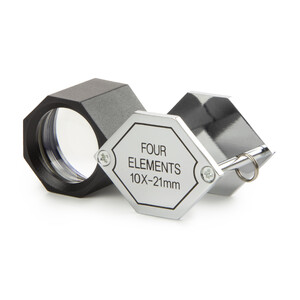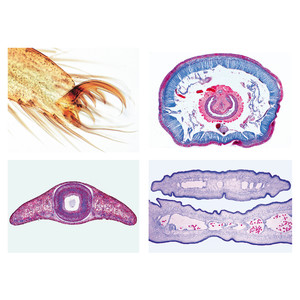Prepared Microscope Slides
Basic component of the program are the A, B, C and D series comprising of 175 microscope slides. The four series are arranged systematically and constructively compiled, so that each enlarges the subject line of the proceeding one. They contain slides of typical micro-organisms, of cell division and of embryonic developments as well as of tissues and organs of plants, animals and man. Each of the slides has been carefully selected on the basis of its instructional value. LIEDER prepared microscope slides are made in our laboratories under scientific control. They are the product of long experience in all spheres of preparation techniques. Microtome sections are cut by highly skilled staff, cutting technique and thickness of the sections are adjusted to the objects. Out of the large number of staining techniques we select those ensuring a clear and distinct differentiation of the important structures combined with best permanency of the staining. Generally, these are complicated multicolor stainings. LIEDER prepared microscope slides are delivered on best glasses with ground edges of the size 26 x 76 mm (1 x 3"). – Every prepared microscope slide is unique and individually crafted by our well-trained technicians under rigorous scientific control. We therefore wish to point out thatdelivered products may differ from the pictures in this catalog due to natural variation of the basic raw materials and applied preparation and staining methods.
The number of series in hand should correspond approximately to the number of microscopes to allow several students to examine the same prepared microscope slides at the same time. For this reason all slides out of the series can be ordered individually also. So, important microscope slides can be supplied for all students.
2800 Phanerogamae, Elementary Set
25 Microscope Slides
1. Simple plant cells, epidermis of Allium w.m.
2. Cell division (mitosis) all stages, in Allium root tips l.s.
3. Starch grains, t.s. of potato tuber
4. Cork cells, t.s. of bark of Quercus
5. Stone cells, t.s. of fruit of pear
6. Root hairs on root tip
7. Zea mays, corn, typical monocot root t.s.
8. Ranunculus, buttercup, typical dicot root t.s.
9. Zea mays, corn, monocot stem t.s.
10. Triticum, wheat, gramineous stem t.s.
11. Aristolochia, birthwort, one year stem t.s.
12. Aristolochia, older stem t.s.
13. Cucurbita, pumpkin, stem with bundles and sieve tubes l.s.
14. Sambucus, elderberry, stem with lenticels t.s.
15. Tulipa, tulip, leaf epidermis with stomata w.m.
16. Zea mays, corn, leaf t.s., monocot gramineous leaf
17. Syringa, lilac, leaf t.s., dicot leaf
18. Fagus, beech, leaf bud t.s. shows leaf origin
19. Lilium, lily, flower bud t.s. shows flower diagram
20. Lilium, anthers t.s. shows pollen chambers and pollen grains
21. Lilium, ovary t.s. with embryosac
22. Lilium, stigma with pollen and pollen tubes l.s.
23. Pinus, pine, leaf (needle) t.s.
24. Triticum, wheat, grain (semen) t.s. with embryo and endosperm
25. Capsella, shepherd's purse, l.s. of embryos in situ




